A Simple Renovation Project Planned
It was the year 1963 and a man from Turkey simply wanted to make his home bigger because his family was growing. As per tradition, many generations live under one roof, so he decided to find a way to expand his basement. He started to chip away at the wall, but instead of finding rock or dirt, he found a hollow room.
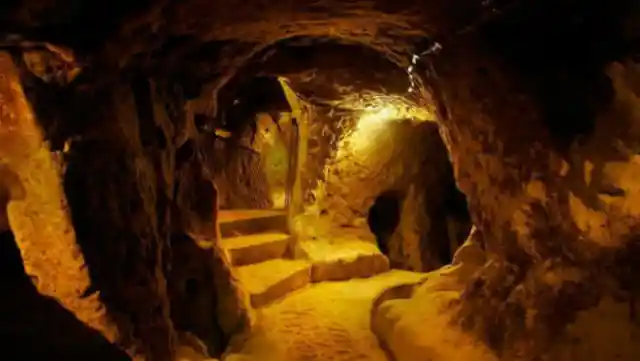
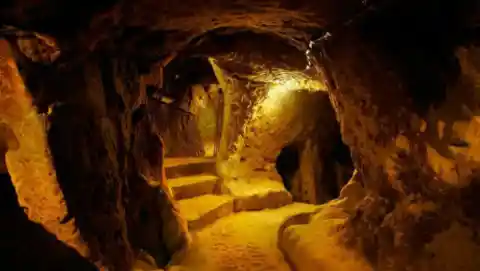
At that point, he uncovered an ancient secret that had been hidden away in the dark for centuries. Read our article to learn more about this man’s incredible discovery.
On one fateful day in 1963, a man in Turkey decided that the time had come to expand his home. As is customary in Turkey, multiple generations of a family lived together in the same house. Because of this, his house, unfortunately, had become cramped and uncomfortable. He took it upon himself to build more space.
Living on a modest income, he didn’t have the money to hire a professional builder to do the job for him.
An Unassuming Man
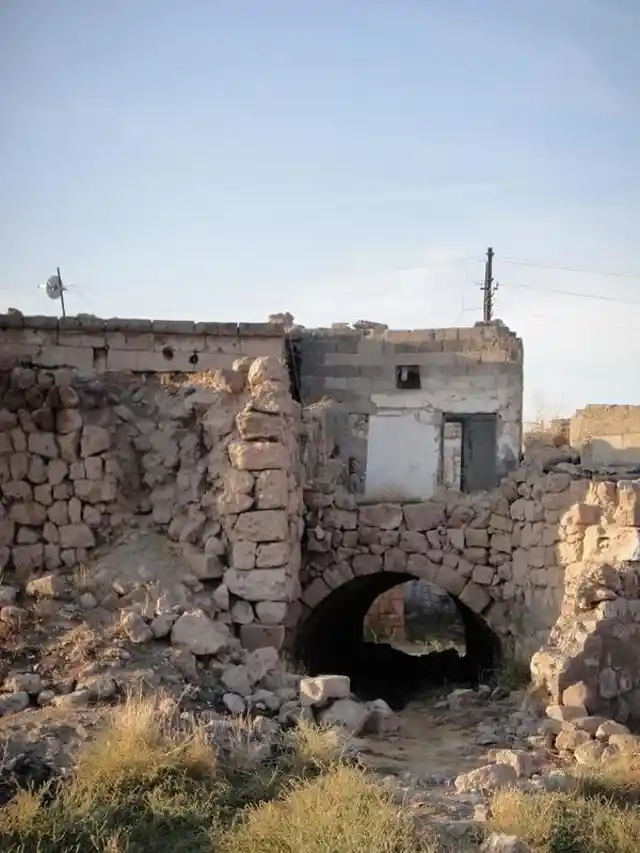
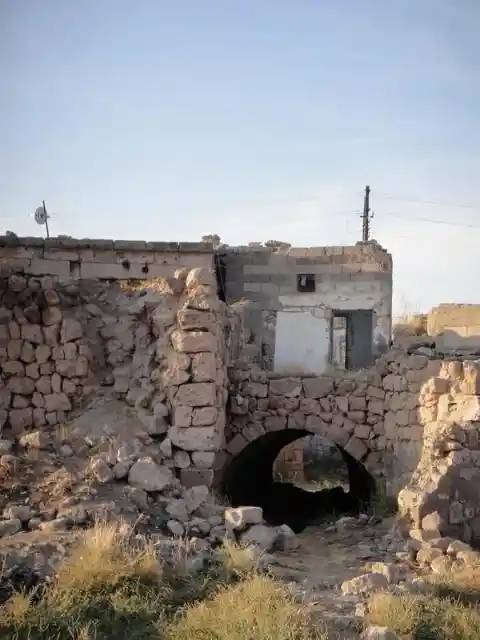
He had to do it himself. The original plan was to knock down a wall in his basement to build an extension. It was supposed to be a simple renovation but instead, he stumbled upon a dark secret from the past that would change history.
The man and his growing family were living in the Nevşehir Province of Turkey at the time. His identity remains a mystery. Not even his name is known.
The Secret Room
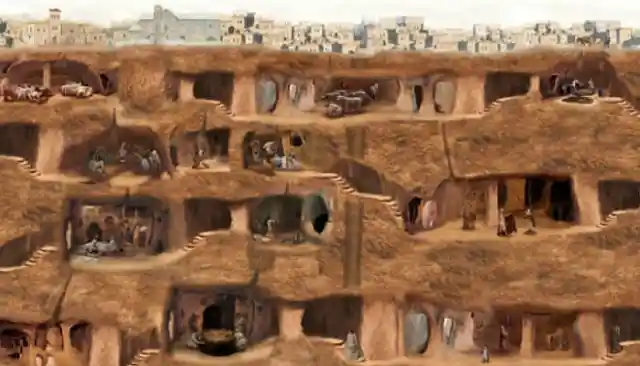
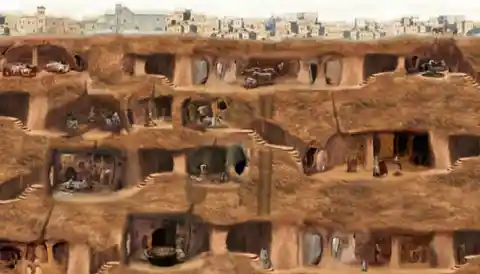
He was just a simple man living in an ancient area and he just wanted to expand his home a bit.
The man’s home, like so many in the area, was made out of an ancient white stone found in Nevşehir Province, the heartland of Turkey on the Anatolian plateau. His house looked just like every other house, or so it seemed from the outside.
In his basement, he started working to knock down one of the walls, which would serve to expand the house. However, he noticed something odd. As he chipped away at the stone, an opening appeared.
Stepping into the Darkness
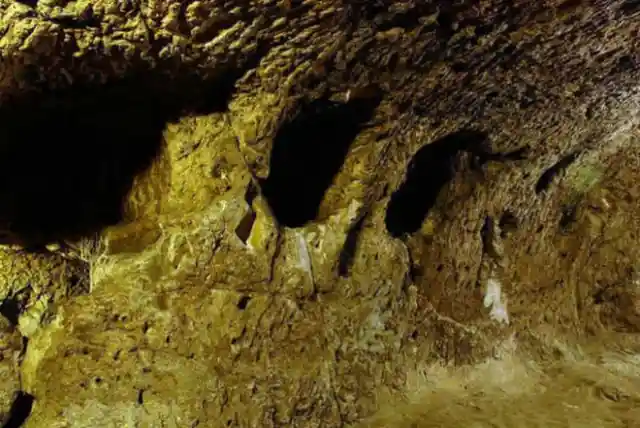
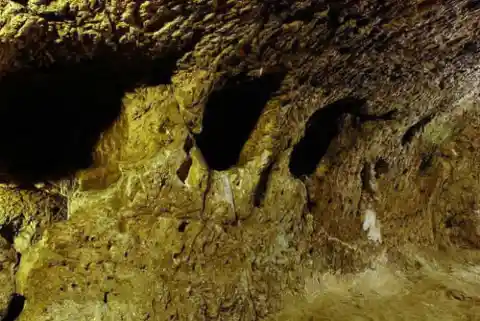
Slowly he started uncovering what he thought was a secret room.
As he continued to chip away at the opening, cool but stale air poured out, possibly trapped for thousands of years behind the hard stone. The hole, now large enough to enter, was pitch-black. He quickly found a flashlight and began to explore the strange new discovery in his home.
As the man entered the mysterious chamber, he had no idea what he would find. The room was narrow and cramped with nothing inside. Slightly disappointed he decided to follow the crevice farther down, hoping to not find anything dangerous lurking in the dark.
His fear was real because Turkey is home to a wide variety of venomous snakes, spiders and scorpions that enjoy the cool, dark crevices which define the ancient region.
Into the Unknown
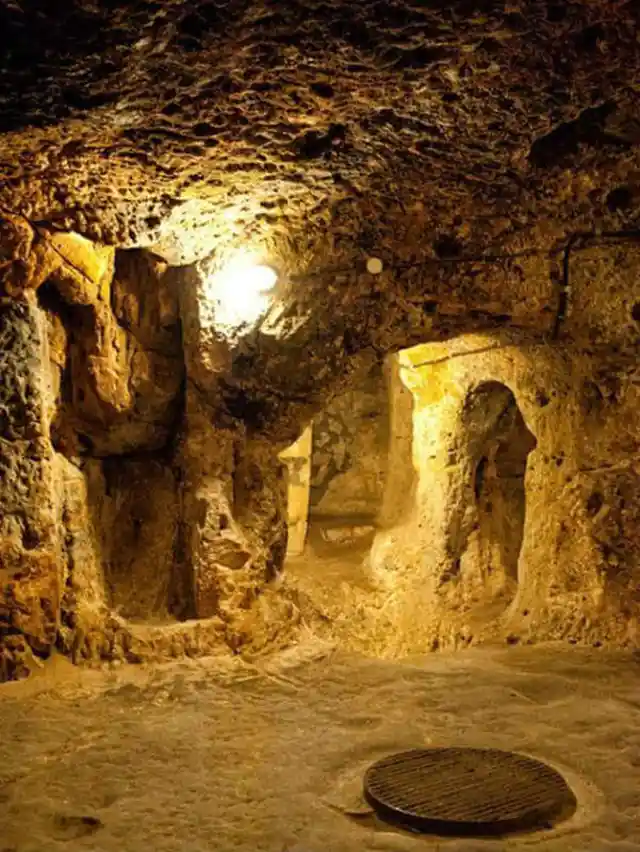
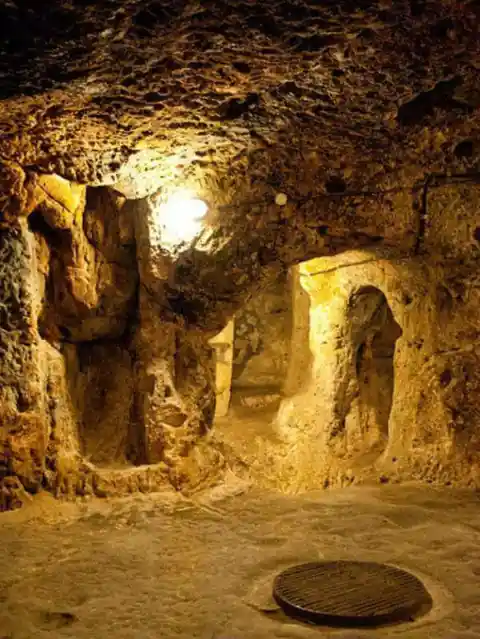
In the back of his mind he knew that if he were to encounter any of the unfriendly foes, the dark chamber could easily become his tomb. He continued onward.
To his surprise, the crevice turned into a narrow hallway which led to a cavernous room. Carved into the volcanic stone under his house was something he never expected to find: some sort of subterranean hideout.
Unnaturally Smooth
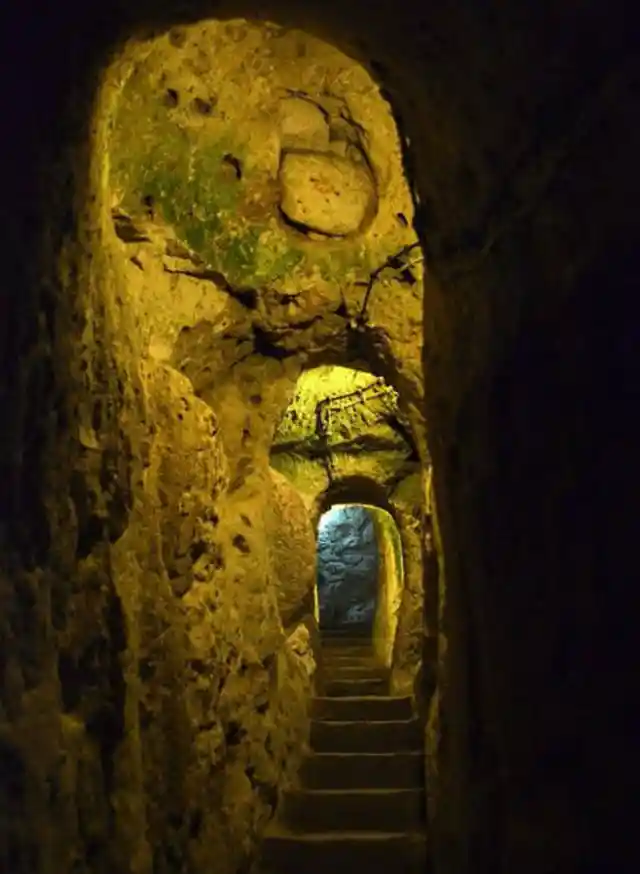
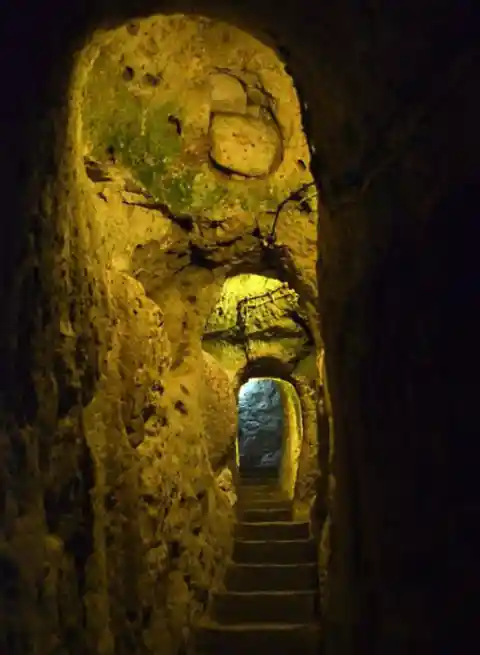
Many such sites have been found in the region, but this one was unusual because it was so big.
The others in the area range in save from small caves used as storage facilities, to tombs, to even ancient temples that date back thousands of years. Perhaps he was hoping to find long forgotten treasure, but what he found instead would rewrite history.
The cavernous room was far from naturally occurring. The stone appeared to be cut by humans long ago and the stone floor had been worn down smooth. Even though it was darker than night and the exit had long since disappeared from sight he continued onward, anxious to explore the new terrain.
With only a flashlight in hand, he submerged further into the subterranean underlands.
Further Down Into The Abyss
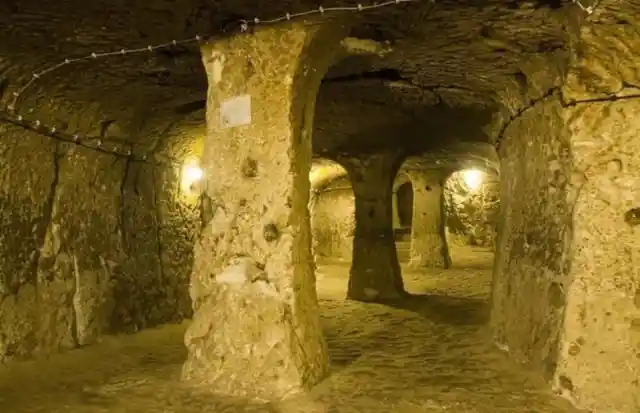
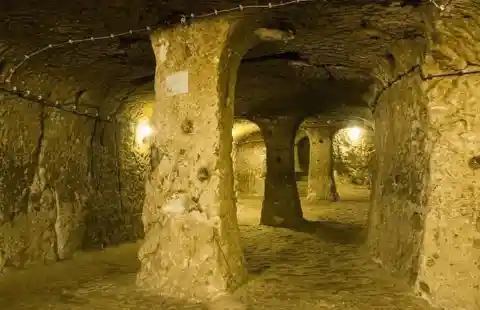
The sight appeared to be something straight out of a fantasy movie, the likes of which would be inhabited by monsters, mole people or any of the nameless horrors of fiction. This was real life, though.
The man continued to make his way around the room, moving from corner to corner, exploring every inch. Suddenly, he came upon an opening in the wall opposite the way he had entered. The opening led to another narrow corridor, just wide enough for one person to fit through.
This quickly transformed into a stairwell.
Bizarre Discovery
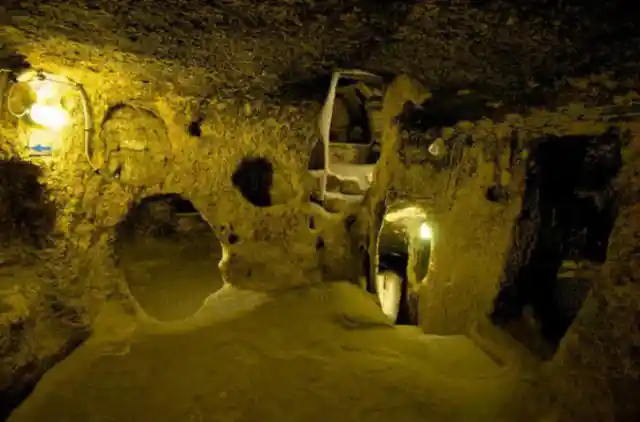
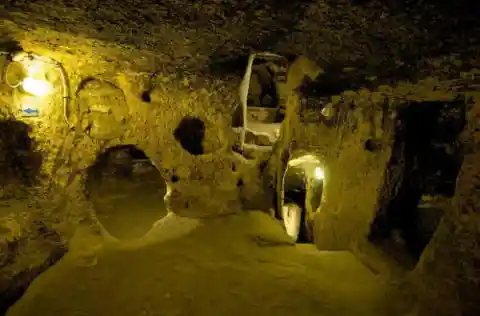
The ceilings were just low enough that he had to crouch down as he descended into the dark unknown. Nobody would have believed such a place existed were he not to see it with his own eyes.
The further he went into the seemingly never-ending labyrinth, the more he was convinced that he had discovered something huge— much more significant than just a few caves or an ancient storehouse. After taking his time exploring the maze of rooms, he carefully tried to make his way back to his home.
Getting lost in the underground caves was not an option.
Fire and Ash
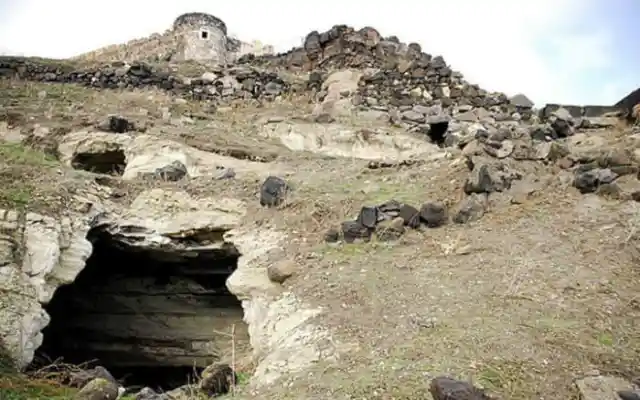
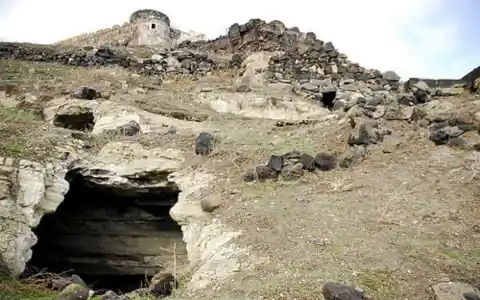
Who knows how long it would take someone to find him deep under the Earth’s surface? Miraculously, he resurfaced and immediately notified the Turkish Antiquities Authority of his bizarre discovery.
The Turkish Province of Nevşehir in which the man lived was known in ancient times by the name of Cappadocia, a historical region of Central Anatolia. The earliest mention of the name Cappadocia dates back to the 6th century B.C. in inscriptions of two early kings as part of the Persian Empire.
The area is located high up on the Anatolian plateau, around 3,280 feet in altitude.
Uncovering the Truth
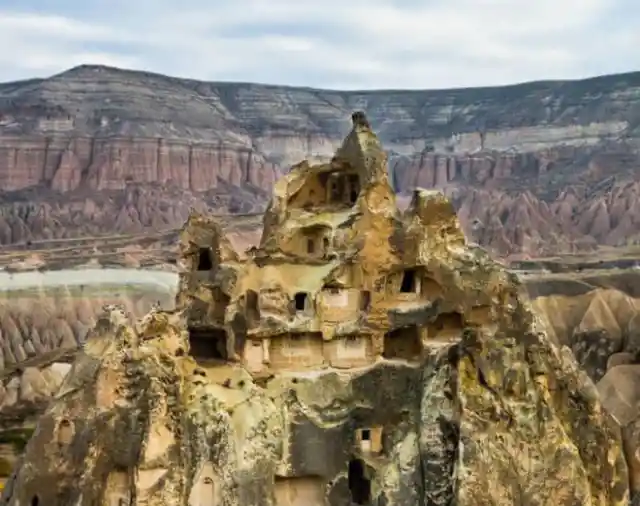
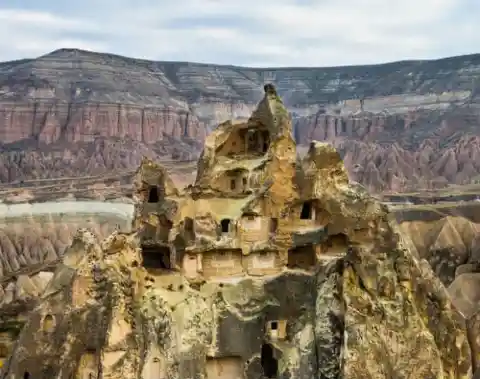
It is dry and arid and the landscape is pierced by volcanic peaks. There are at least 14 volcanoes scattered around this territory of modern-day Turkey. Could the strange lair be related to the volcanoes?
Researchers began their hunt to uncover the truth surrounding this strange place. The first known inhabitants of the region were Hittites, an ancient Anatolian people who established an empire on the plateau around 1600 B.C. After the empire fell, the area became a sort of feudal aristocracy until being overtaken by the Persian Empire.
A Myth Comes True
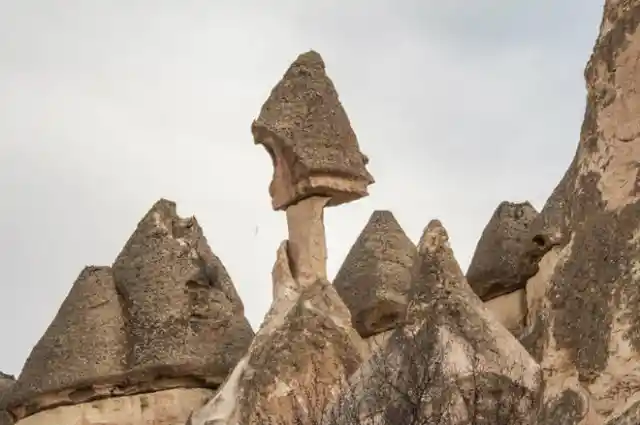
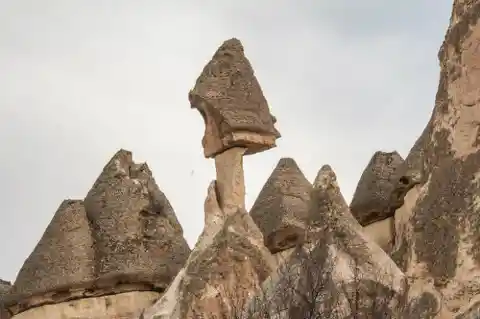
Could they have built this strange lair?
The ancient region of Cappadocia has been inhabited by numerous different peoples throughout the ages. The Biblical book of Acts suggests that it was inhabited by Jews. Whoever lived there, the question remains: Why would anyone need to build such huge underground caves?
Turkish authorities arrived to investigate the new discovery. Little did they know that they were walking into one of the greatest archaeological discoveries ever. After some exploration researchers confirmed that the site was actually the lost subterranean city of Derinkuyu.
Many had come to think that the city of Derinkuyu was just a myth, much like Atlantis or El Dorado.
Conspiracy Theories
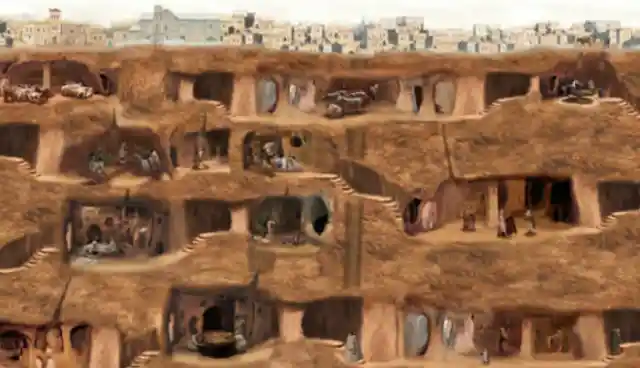
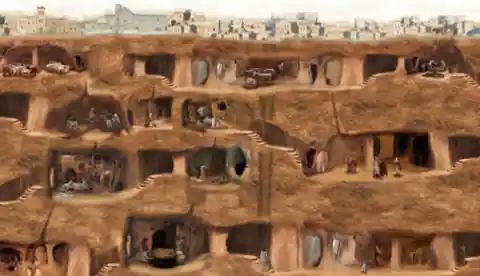
Researchers believe that construction of the city, at first just small caves, began in the 8th and 7th centuries B.C. by the Phrygians, an Indo-European people. Archaeologists were shocked at just how deep down the city went.
Since the discovery of Derinkuyu in 1963, many theories have arisen as to the exact purpose of the city and why it was necessary to build such a complex. Some researchers have theorized that the original purpose of the underground city was as a shelter from natural disasters. Others hypothesized that the city had been created to hide from alien invasions.
The Zoroastrian text Vendidad refers to an underground city that was built on the orders of the god Ahura Mazda to protect the residents from a catastrophic winter.
An Ancient Secret
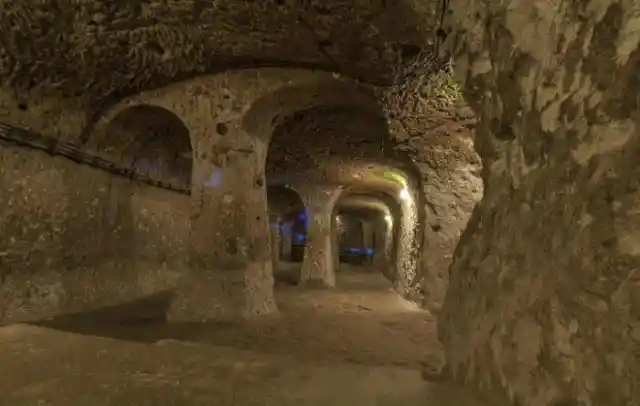
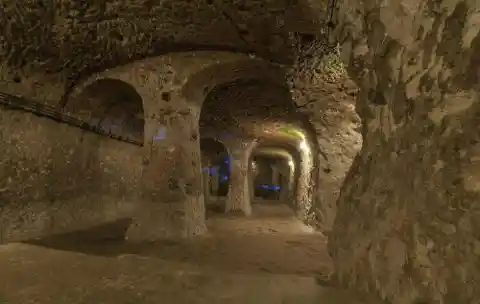
Though not widely accepted, some researchers claim that the Zoroastrian text refers to the city of Derinkuyu. If the city referenced is Derinkuyu that would date its construction from between 1500 to 1200 B.C.
Archaeologists began their work and began to believe that Derinkuyu descended at least 18 stories below the surface, making it one of the largest ancient man-made underground sites in the world. Extending approximately 200 feet into the ground, it is a subterranean marvel of engineering.
Researchers estimate that the city, at capacity, could have housed as many as 20,000 people and provided them with their basic necessities.
Life Under Attack


But who were the people living so far deep underground? What were they hiding from?
The city of Derinkuyu was completed during the Byzantine era and consisted of both an above-ground city and an underground city. The underground city served as a protective fortress to the residents during times of war, which were frequent.
The Arab-Byzantine wars raged on for 400 years, leaving a path of destruction in its wake.
Forced Underground
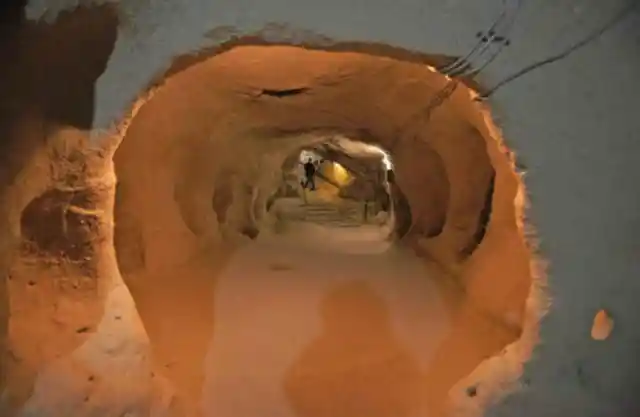
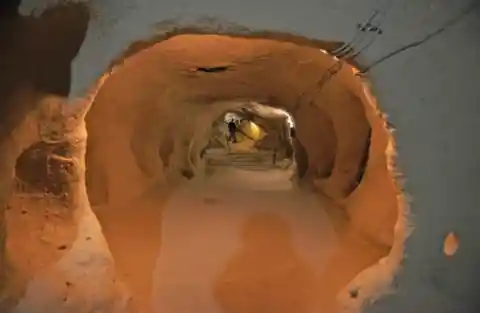
Starting in 634 A.D., the Christian Byzantine Empire was under constant attack by the Muslim Aram Empires from the south. After losing the majority of their southern provinces, the remaining Byzantine provinces dug their heels in deep trying to defend their territory.
During times of attack, the inhabitants of Derinkuyu fled to their subterranean paradise, safe from the invading Arab armies. The Muslim Civil War in 656 A.D. put their conquest on a brief hold and gave the Byzantines precious time to strengthen their defenses.
The peace did not last long.
Subterranean Defense
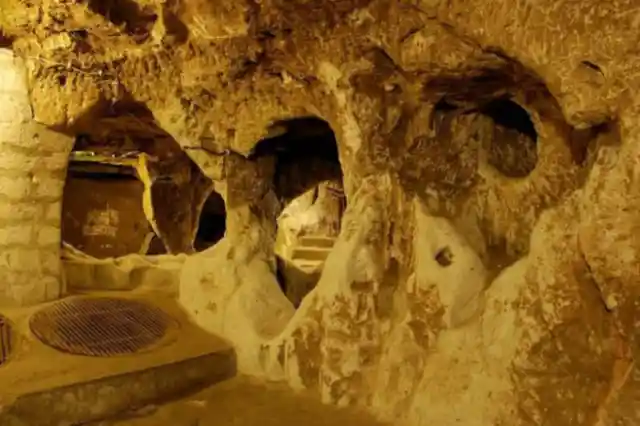
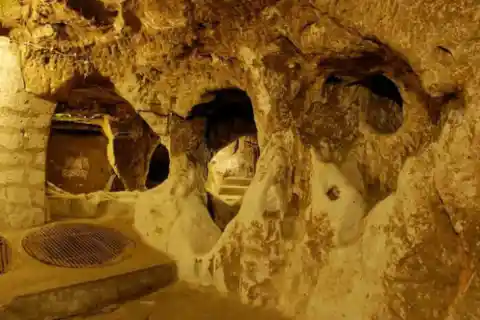
After Muawiyah reigned victorious in the civil war, he founded the Umayyad Empire and the Arab-Byzantine War was back on. The residents of Derinkuyu were forced underground multiple times during the ongoing conflict. They only survived thanks to their underground sanctuary.
By the time the Muslim invaders arrived, the underground fortress at Derinkuyu was well prepared to defend itself. To the outside world, the upper-city would appear abandoned with no trace of people or livestock. The residents were well protected.
Around 100 secret entrances into the complex have been found, each one as hidden as the next.
An Ancient Security System
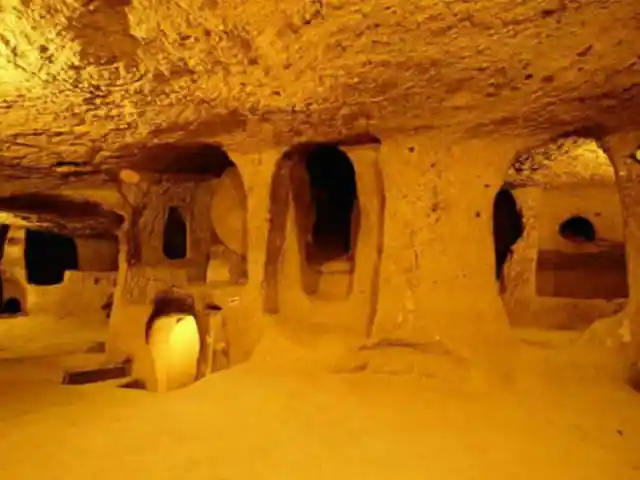
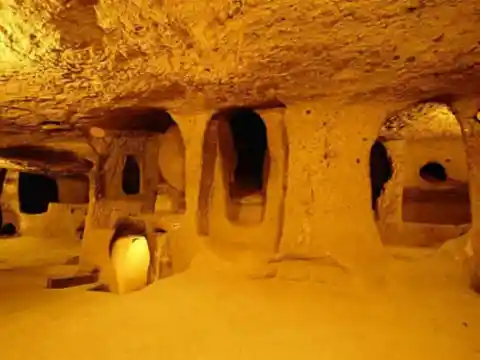
Should one of the entrances be found, they were narrow enough to only allow one person to enter at a time, thus ensuring that no armed horde would ever gain access. Taking down invaders entering the complex would be like shooting fish in a barrel. The residents knew well that a single soldier would be defenseless without support.
Inside the underground city, security was just as tight and defense was their first priority. It showed in the layout of the site.
Impressive Amenities
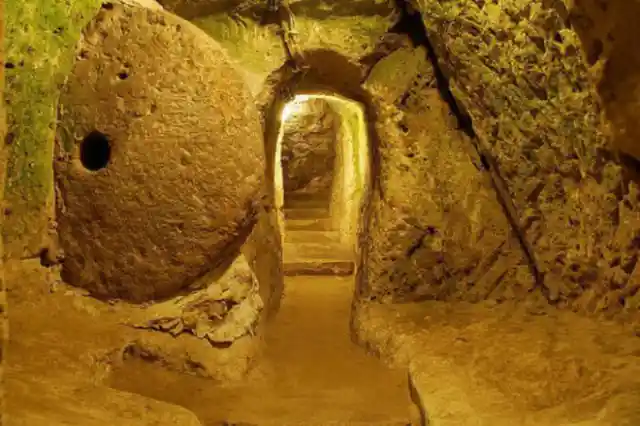
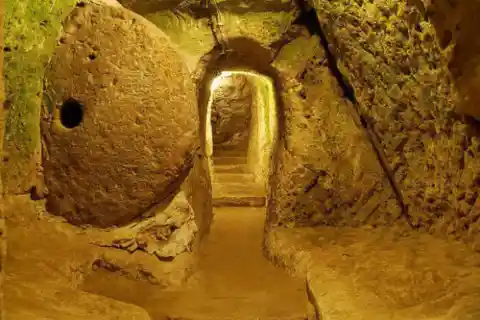
Each level of the city was connected via stairs which were so narrow it was only possible to enter single-file.
In addition to their single-file tactic, every level of the city could easily be sealed shut with boulders which were situated at every opportune location ready to go. With at least 18 floors, the residents could easily flee to the lower levels should the upper-levels of the compound be breached.
The astonishing underground city had an impressive infrastructure. The residents had access to freshwater directly from within the city via water wells.
Entrance to the Underworld
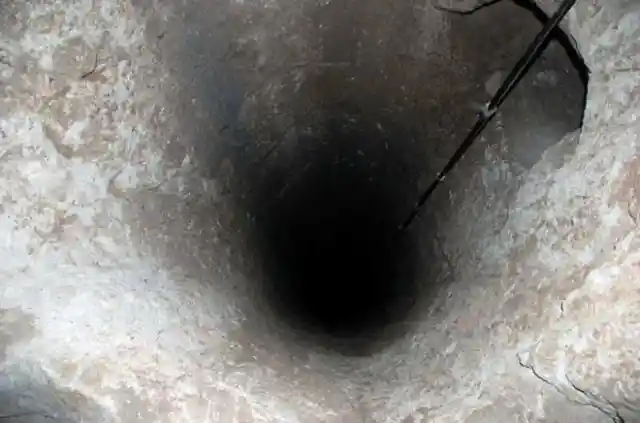
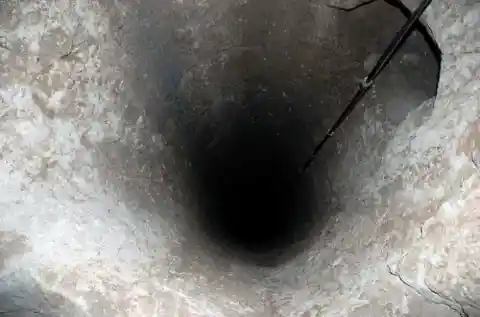
The wells were tactically inaccessible from the surface, ensuring that no invaders would be able to poison the city’s water source.
Derinkuyu was also equipped with a modern ventilation system which was capable of providing fresh air to all 18 levels of the subterranean city. The ducts were well hidden on the surface and far too narrow for any human to fit through.
Over 100 secret entrances to the city have been found throughout the region, forgotten over time. All of the entrances were well hidden behind bushes, walls and even in courtyards. Evidence shows that residents moved their livestock down into Derinkuyu during times of need, thus ensuring that the upper-city looked completely abandoned.
The advanced ventilation system also provided an exit for the smoke.
Daily life
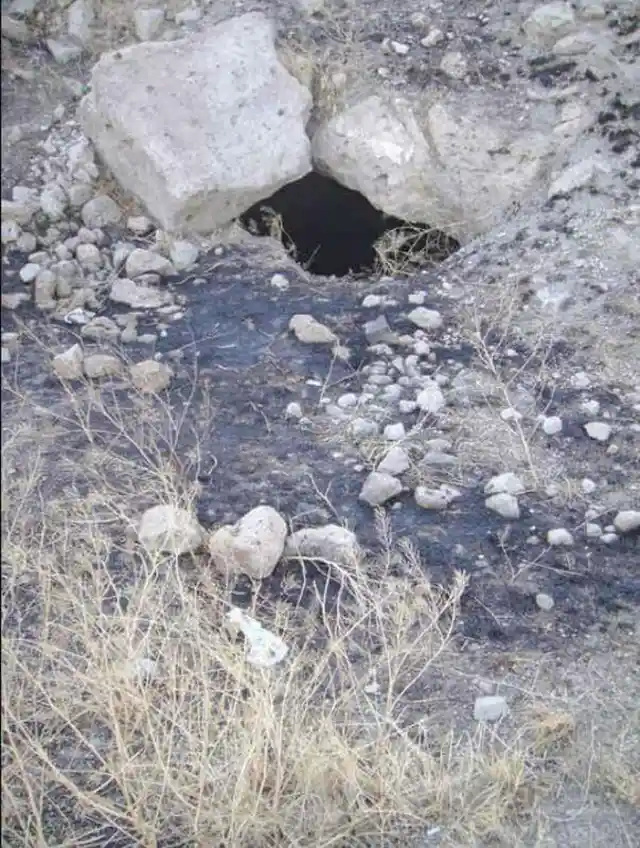
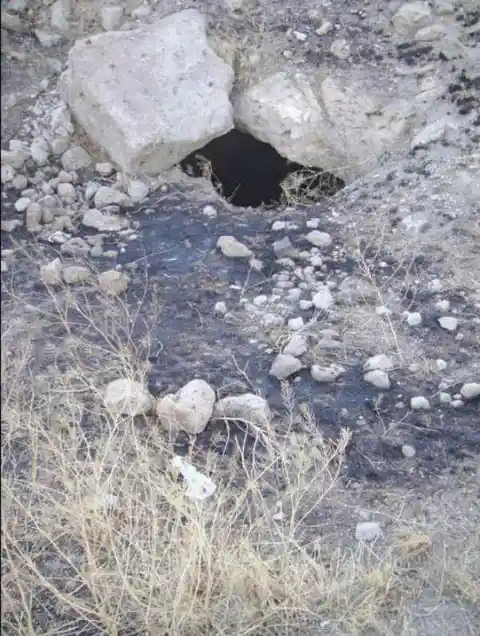
As electricity hadn’t been discovered yet, the city was lit by torch-fire. Most of the ceilings within the compound were blackened by centuries of ash from the fires.
Apart from being able to house around 20,000 residents, Derinkuyu was also capable of sustaining the hidden populace for extensive lengths of time. The underground complex was equipped with living quarters, well-stocked storage rooms, stables, oil presses, wine cellars, classrooms, stores and churches.
Life didn’t stop underground.
Holy Shelter
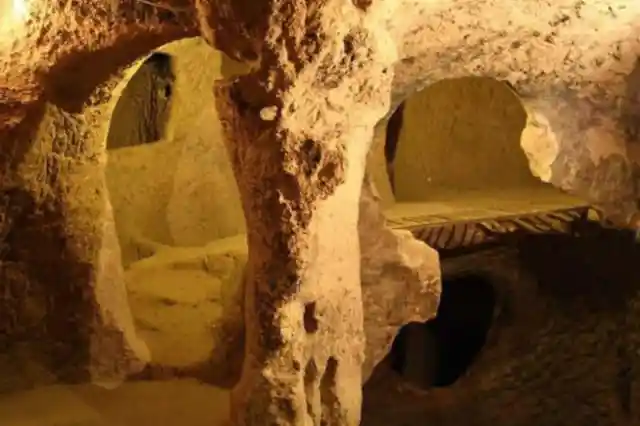
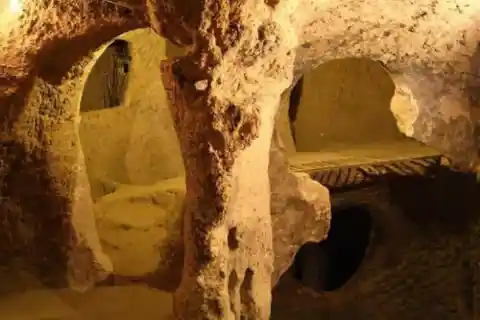
While in hiding residents were able to continue living their lives as usual with few interruptions. This proved incredibly useful during the Byzantine era when it was used as protection from the Muslim-Arab invasions between 780-1180 A.D.
Derinkuyu, during the years it was in use, was used by Christians native to the region as shelter from religious persecution. The city was heavily used in the 14th century as protection from the invading Mongolian armies too.
Religious artifacts were stored for safe-keeping on the lowest levels of Derinkuyu and while the city was occupied, religious studies carried on in the cavernous halls.
A Vast Network
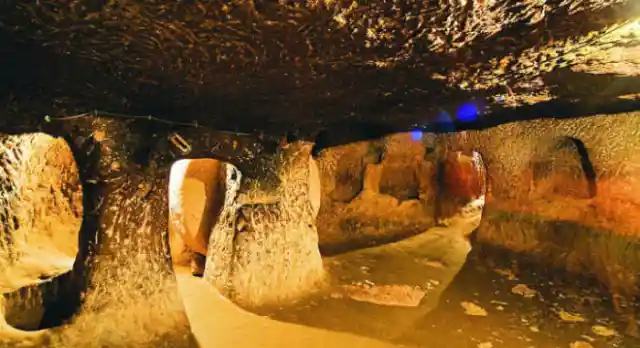
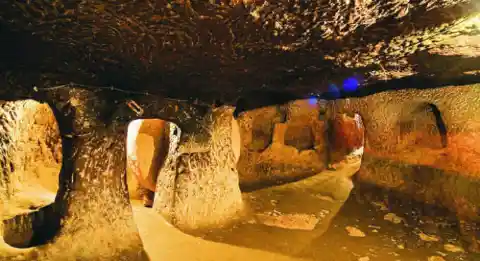
Chapels were built on the lowest levels of the city since the lowest levels were the most protected from invaders.
The city of Derinkuyu was not alone. In fact, it was connected to other underground cities in the region via miles of tunnels. At least 200 other underground cities, each consisting of at least three levels, have been discovered in the surrounding area.
In the unlikely event of discovery and siege, the city had multiple escape routes prepared.
Abandoning It All
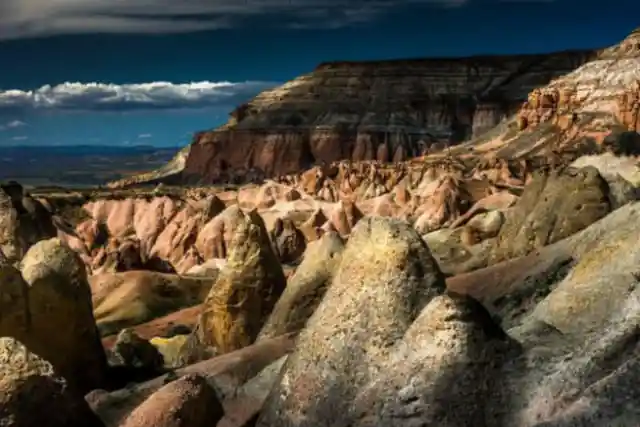
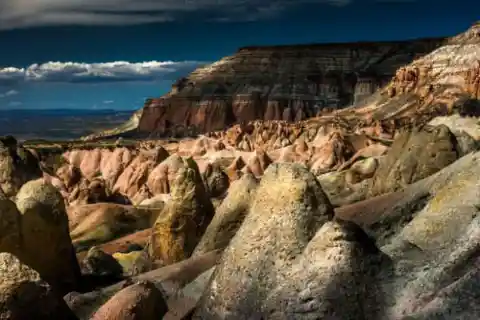
All 20,000 residents of Derinkuyu could be evacuated to a neighboring city without ever going above ground. The tunnels could be sealed off behind them with heavy stone doors and easily defended from within.
Eventually, the Byzantine Empire was slowly annexed by the Ottomans in the first half of the 15th century. The fall of Constantinople in 1453 marked the end of the Byzantine Empire.
Who Built Derinkuyu?
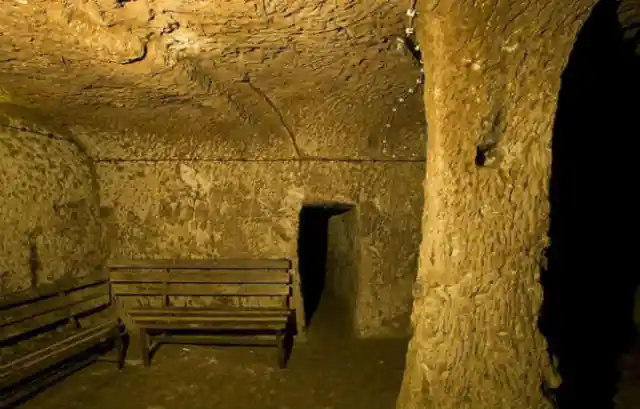

After the fall of the Christian Empire, the underground cities were used as a refuge from the new Turkish Muslim rulers.
Research and archaeological evidence have revealed that cities such as Derenkuyu were still in use as late as the 20 century to escape the periodic waves of Ottoman persecution. When the Christian inhabitants were expelled to Greece in 1923 by the Ottoman Empire and the subterranean cities were abandoned.
The exact builders of the ancient city are still a mystery, but the Turkish Department of Culture currently believes Derinkuyu may have been built by the Phrygians in the 8th and 7th centuries B.C. The city is the largest underground settlement found in Turkey to date.
The first written mention of Derinkuyu is believed to have been found in the writings of Xenophon from around 430-354 B.C.
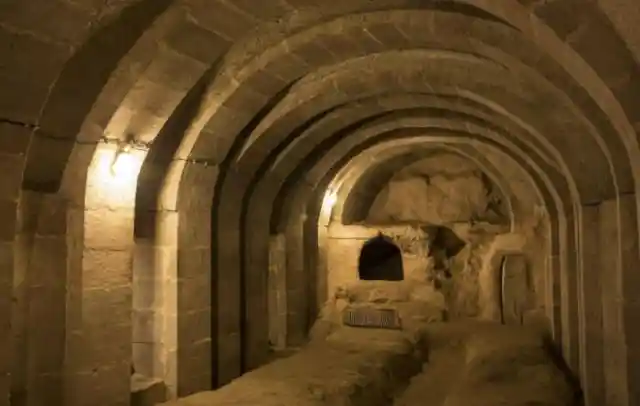
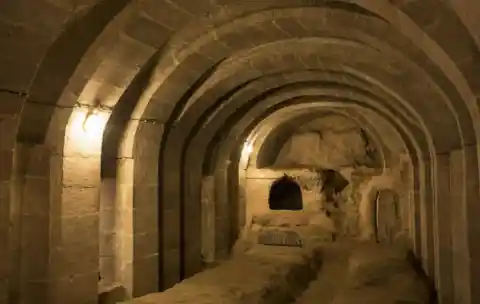
Xenophon was an ancient Greek philosopher, historian, soldier and student of Socrates. Still, it does not reveal who exactly was able to build such an ancient marvel.